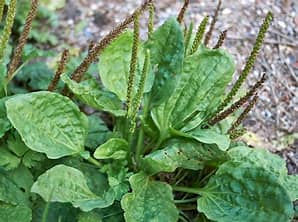Nature’s First Aid Kit: Herbs That Grow Wild in Bastrop County
- T.j. Johnson
- Jul 10
- 3 min read
Long before pharmacies and packaged pills, people turned to the land for healing. In Bastrop County—home to the unique Lost Pines ecosystem and a rich tapestry of Blackland Prairie and post oak savannah—nature’s first aid kit still grows wild and free.
Whether you’re an experienced herbalist or just curious about what’s sprouting along the trail, here’s a guide to some of the most common wild herbs with traditional healing uses that grow naturally right here in Bastrop County.
⚠️ Disclaimer: Always consult a healthcare professional or trained herbalist before consuming wild plants. Proper identification and dosage are essential.

🌼 1. Yarrow (Achillea millefolium)
Found: Open meadows, along fences, disturbed roadsidesUses: Historically used to stop bleeding, ease fevers, and soothe digestive issuesFolk Name: “Soldier’s Woundwort”
With its feathery leaves and white to pinkish flower clusters, yarrow has been used for centuries as a natural antiseptic and anti-inflammatory. Crushed fresh leaves can be applied to small cuts, while dried flowers make an excellent tea for colds or cramps.

🌿 2. Plantain (Plantago major and Plantago lanceolata)
Found: Lawns, trails, gravelly soilUses: Wound healing, insect bites, skin irritationNickname: “Green Band-Aid”
This unassuming low-growing plant is often dismissed as a weed, but its broad or narrow leaves are packed with healing power. Chew or crush a leaf and apply to stings, rashes, or cuts for almost instant soothing relief.

🌵 3. Prickly Pear Cactus (Opuntia spp.)
Found: Sunny fields, rocky hillsidesUses: Burn relief, anti-inflammatory, blood sugar supportBonus: Edible fruit (tunas) and pads (nopales)
More than just a Texas icon, the prickly pear cactus is used in natural remedies for everything from minor burns to digestive issues. The inner gel of the pads has cooling properties similar to aloe vera, and the fruits are rich in antioxidants.

🌾 4. Elderberry (Sambucus nigra ssp. canadensis)
Found: Along streams, damp woodland edgesUses: Immune support, cold and flu symptomsCaution: Leaves and unripe berries are toxic if eaten raw
Come summer, elderberry bushes bloom with white flower clusters that later produce deep purple berries. A time-honored remedy, elderberries are often made into syrups and teas to support the immune system. The flowers can also be dried for calming infusions.

🪻 5. Horsemint (Monarda citriodora)
Found: Prairies, roadsides, open woodlandsUses: Calming, antiseptic, digestive aidAlso known as: Lemon bee balm or wild bergamot
This beautiful wildflower with purple tufts smells like lemon and attracts pollinators—and herbalists. Horsemint has been traditionally used in teas to calm the nerves, support digestion, and reduce mild inflammation.

🍃 6. Texas Betony (Stachys coccinea)
Found: Dry woodlands, shady roadsidesUses: Historically used for anxiety, coughs, and mild pain relief
A native mint-family plant with red tubular flowers, Texas betony has traditionally been brewed as tea for its relaxing effects. It’s often found alongside its cousin, scarlet sage, in shady oak groves and along trails.

🌱 7. Chickweed (Stellaria media)
Found: Moist shaded gardens, fence lines, creek banksUses: Skin healing, minor rashes, nutrition supplement
This delicate, low-growing plant is packed with vitamins and minerals. Chickweed has been used in salves for eczema and minor burns, and its fresh leaves are even edible in salads (after proper ID). It's especially soothing for dry, itchy skin.

Bonus: Pine Needles (Pinus taeda – Loblolly Pine)
Found: Lost Pines Forest, throughout Bastrop CountyUses: Vitamin C boost, respiratory health
Loblolly pine needles can be steeped to make a tea high in vitamin C, historically used for cold and cough relief. The aroma alone is invigorating, and the tea may help open up the lungs.
🧺 Foraging Tips for Beginners
Bring a guidebook or app. Misidentification can be dangerous—some lookalikes are toxic.
Harvest responsibly. Take only what you need and leave enough for pollinators and regrowth.
Never harvest from roadsides or polluted areas due to chemical contamination.
Know the law. Don’t forage on private property without permission or in protected areas.
🌿 Healing in Our Backyard
Nature provides not only beauty and peace—but real tools for health. As more people seek natural ways to manage stress, immunity, and minor ailments, wild herbs offer a bridge between tradition and modern wellness. And in Bastrop County, that bridge is right outside your door.
Whether you're steeping a wild tea, blending a healing salve, or just taking a mindful walk among the herbs, remember: healing often begins with reconnecting to the land.




Comments